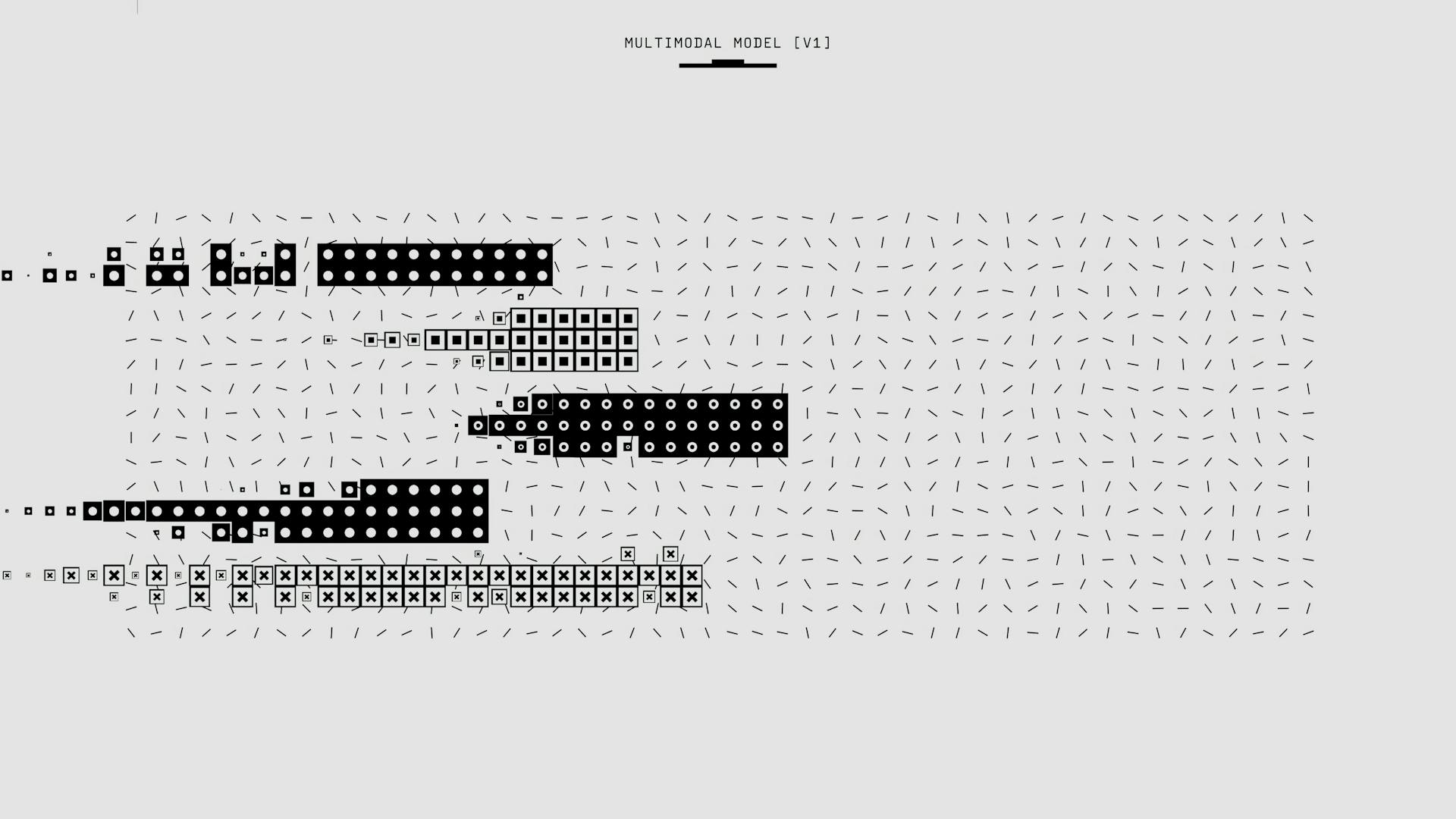
Model stacking is a powerful technique for improving machine learning predictions by combining the strengths of multiple models. This approach can be especially useful when dealing with complex data.
By stacking different models, you can create an ensemble that performs better than any individual model. For example, as mentioned in the article, a combination of a random forest and a support vector machine (SVM) can outperform both models on their own.
The key to successful model stacking is to select models that complement each other. As explained in the article, choosing models with different strengths and weaknesses can help to identify the most accurate predictions.
Broaden your view: Is Transfer Learning Different than Deep Learning
Ensemble Learning
Ensemble learning is a powerful technique in machine learning that combines the predictions of multiple models to improve accuracy and efficiency. It's a way to harness the strengths of different models and create a new, more accurate model.
Ensemble methods use multiple learning algorithms to obtain better predictive performance than any single algorithm. This is because individual models can have biases and limitations, but when combined, they can learn from each other and produce more accurate results.
Additional reading: What Is Ensemble in Machine Learning
Some popular ensemble methods include bagging, boosting, and stacking. Stacking, in particular, is a technique that involves training a second-level "metalearner" to find the optimal combination of the base learners.
The super learner algorithm is a type of stacking that consists of three phases: setting up the ensemble, training the ensemble, and predicting on new data. This algorithm is designed to ensemble a diverse group of strong learners and has been shown to be asymptotically optimal.
Stacking can be used with different ensemble techniques, including voting ensembles, weighted average ensembles, blending ensembles, and super learner ensembles. These techniques can be used to combine the predictions of different models and improve accuracy.
Here are some common ensemble techniques related to stacking:
Stacking can be a powerful tool for improving model accuracy, but it requires careful selection of base learners and ensemble techniques.
Stacking Basics
Stacking is a type of ensemble learning that combines the predictions of multiple models to produce a more accurate outcome.
Leo Breiman formalized stacking in his 1996 paper on Stacked Regressions, where he introduced the concept of using internal k-fold CV.
In model stacking, we make predictions with several different models, and then use those predictions as features for a higher-level meta model.
Stacking can work especially well with varied types of lower-level learners, all contributing different strengths to the meta model.
The basic model stack involves making non-leaky predictions on the train data using a series of intermediary models, and then using those as features in conjunction with the original training features on a meta model.
Stacking can be made more complex with multiple levels, weights, averaging, etc.
Ensemble learning, including stacking, is used to optimize the performance of a model by integrating the outputs of multiple models.
Stacking improves the accuracy of the model by combining the predictions of multiple models.
Regression is one of the most common techniques used in stacking, as it maps out dependent and independent variables to compute the output.
H2O's Stacked Ensemble method is a supervised ensemble machine learning algorithm that finds the optimal combination of a collection of prediction algorithms using a process called stacking.
Stacking is a supervised ensemble machine learning algorithm that supports regression, binary classification, and multiclass classification.
A fresh viewpoint: Velocity Model Prediciton Using Generative Ai
Model Selection
Model selection is a crucial step in stacking, where you need to choose the best models to combine. This is done by trying all your models as the meta model and measuring their performance.
The goal is to find the models that work well together and improve each other's predictions. You can do this by using a function like the Stack Selector, which iteratively appends the predictions of each potential model to the feature set and re-scores the meta model. If the score improves, the predictions are permanently appended to the feature set.
The best models to combine are often those with high variability and uncorrelated predicted values. The more similar the predicted values are between the models, the less advantage there is to combining them. To get the best results, you should train your base models on the same training data and use the same number of folds for cross-validation.
Check this out: Feature Engineering Examples
Stack Selector
The Stack Selector is a crucial step in the model selection process. It helps you determine which models to combine and how to optimize their performance.
To use the Stack Selector, you need to prepare your train/test sets in array format. This means your X features should be in an array shape of (n,m) where n is the number of samples and m is the number of features, and your y targets should be an array of (n, ).
The Stack Selector function uses forward selection to iteratively append the potential model's predictions to the feature set and re-score the meta model. If the meta model's score improves with the addition of any feature, the single best scoring potential's predictions are permanently appended to the feature set and the improved score becomes the baseline.
You can use any score metric you prefer, such as mean absolute error, R2, or RMSE. The function will report the optimal included models for the meta model and the best score achieved.
Worth a look: Grid Search Examples Python
The Stack Selector is written to optimize on a Train set using CV. If you have a Validation set, you can rewrite and perform the selection on that, but be careful not to overfit!
Here are the key steps to use the Stack Selector:
- Prepare your train/test sets in array format
- Use the Stack Selector function with your data and models
- Select the optimal included models and score metric
- Optimize the performance of the meta model
By following these steps, you can effectively use the Stack Selector to improve the performance of your models and make informed decisions about which models to combine.
Feature Importance in Regressors
Feature importance is a crucial aspect of regressor models, and understanding how it works can help you make informed decisions about your models.
In the case of StackingRegressor, its get_feature_importances method won't work because it doesn't have the feature_importances or coef_ attribute.
To determine feature importance in a StackingRegressor, you need to inspect each regressor that's part of the stacking.
The importance of features can be measured in different ways, such as absolute importance or relative importance, as shown in the example below.
Common Parameters
When working with model selection, it's essential to understand the common parameters that come into play. The default multinomial AUC type can be set to one of several options, but it's not explicitly stated what those options are.
You can specify a custom name for the model to use as a reference, which can be helpful for organization and tracking purposes. This is done by setting the model_id parameter.
The maximum allowed runtime in seconds for the metalearner model training can be set using the max_runtime_secs parameter. If you want to disable the time limit, simply set it to 0.
The training frame is a required parameter that specifies the dataset used to build the model. This frame is used to retrieve the response column and compute training metrics for the ensemble model.
A validation frame can also be specified to use for tuning the model. This frame will be passed through to the metalearner for tuning.
A unique perspective: How to Use Huggingface Models in Python
Here are the common parameters in a concise list:
- auc_type: Set the default multinomial AUC type.
- export_checkpoints_dir: Specify a directory to export generated models.
- max_runtime_secs: Maximum allowed runtime in seconds for the metalearner model training.
- model_id: Specify a custom name for the model.
- offset_column: Specify a column to use as the offset (availability depends on the metalearner_algorithm).
- seed: Seed for random numbers.
- training_frame: Required dataset to build the model.
- validation_frame: Specify the dataset to use for tuning the model.
- weights_column: Specifies a column with observation weights.
- x: Specify a vector containing the names or indices of the predictor variables to use.
- y: Required dependent variable (response column).
Examples
A Stacked Ensembles model is a great example of how to combine multiple models to improve overall performance.
This approach is particularly useful when dealing with complex problems that require multiple perspectives. Below is a simple example showing how to build a Stacked Ensembles model.
Model Training
Model training is a crucial step in stacking models. You'll need to train a set of "base models" which will make up the ensemble.
These base models must be cross-validated using the same number of folds, such as nfolds=5, or use the same fold_column across base learners. This ensures that the models are tested and validated in a consistent manner.
To train these models, you can either do it manually or use a group of models from a grid search. The models must be trained on the same training_frame, but you can use different sets of predictor columns, x, across models if you choose.
A different take: How to Use Huggingface Models
Using different predictor columns for each base model can add more randomness and diversity to the set of base models, which can potentially improve ensemble performance. However, using all available predictor columns for each base model often still yields the best results.
Here's an example of how to specify hyperparameters for each regressor in the ensemble:
Once the best hyperparameters have been determined for each regressor, the test error is computed through back-testing.
Training Base Models
Training Base Models is a crucial step in building a stacked ensemble. To start, you'll need to train a set of "base models" that will make up the ensemble. These models must be cross-validated using the same number of folds, such as 5, or use the same fold_column across base learners.
All models must be trained on the same training_frame, which means the rows must be identical, but you can use different sets of predictor columns, x, across models. Using base models trained on different subsets of the feature space can add more randomness and diversity to the set of base models, which can improve ensemble performance.
A different take: Can I Generate Code Using Generative Ai Models
The cross-validated predictions from all models must be preserved by setting keep_cross_validation_predictions to True. This is the data used to train the metalearner, or "combiner", algorithm in the ensemble. You can train these models manually or use a group of models from a grid search.
Here are the requirements for training base models:
- The models must be cross-validated using the same number of folds.
- The cross-validated predictions from all models must be preserved.
- The models must be trained on the same training_frame.
- You can use different sets of predictor columns, x, across models.
Note that you can train a Stacked Ensemble model using only monotonic models by specifying monotone_constraints in AutoML and creating at least 2 monotonic models.
Hyperparameter Search of Regressor
When using StackingRegressor, the hyperparameters of each regressor must be preceded by the name of the regressor followed by two underscores. For example, the alpha hyperparameter of the ridge regressor must be specified as ridge__alpha.
The hyperparameter of the final estimator must be specified with the prefix final_estimator__. This is evident in the hyperparameter search results, where the final_estimator__alpha is specified for each row.
You can see in the hyperparameter search results that the lgbm__learning_rate hyperparameter has a range of values, from 0.01 to 0.10. Similarly, the lgbm__max_depth hyperparameter has a range of values, from 3.0 to 10.0.
Here's a breakdown of the hyperparameters that were searched:
The best hyperparameters for each regressor are determined through back-testing, where the test error is computed once the best hyperparameters have been determined.
Related reading: Llama 3 8b Best Finetune Model
Sources
- https://towardsdatascience.com/simple-model-stacking-explained-and-automated-1b54e4357916
- https://bradleyboehmke.github.io/HOML/stacking.html
- https://skforecast.org/0.11.0/faq/stacking-ensemble-models-forecasting
- https://docs.h2o.ai/h2o/latest-stable/h2o-docs/data-science/stacked-ensembles.html
- https://www.scaler.com/topics/machine-learning/stacking-in-machine-learning/
Featured Images: pexels.com


